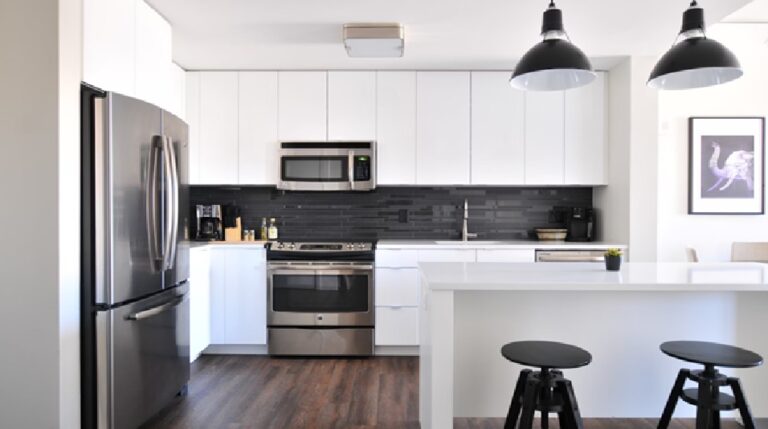
A green pool is a common headache for pool owners, but it’s not a lost cause. Whether caused by algae, poor circulation, or unbalanced chemicals, a green pool can often be revived with the right steps. While it may seem like a daunting task, cleaning a green pool is manageable with the right approach and tools. In this article, we’ll guide you through the process of turning your green pool back to its sparkling blue state.
Why Pools Turn Green
Before we dive into the cleaning process, it’s important to understand why pools turn green. The most common cause is algae growth, which can occur when the pool’s water chemistry is out of balance, usually due to low chlorine levels. When algae spores land in the pool water, they start to grow and multiply, turning the water green. In some cases, green pool water can also be a result of poor filtration, inadequate circulation, or debris buildup, which prevent the chemicals from reaching all parts of the pool.
It’s also possible for a pool to turn green after a heavy rain or after the pool has been neglected for an extended period of time. Whatever the cause, don’t panic—there are steps you can take to restore the water to its original clarity.
Step 1: Test and Balance Pool Chemistry
The first step in cleaning a green pool is testing the water’s chemistry. You need to determine the levels of chlorine, pH, alkalinity, and stabilizer to ensure they are within the correct range. To test the water, you can use a pool water test kit or take a sample to a local pool store for analysis.
- Chlorine Levels: If the chlorine level is low or nonexistent, algae will thrive. You’ll need to add a significant amount of chlorine to kill the algae. Shock treatments, which are high doses of chlorine, are typically used for this purpose.
- pH and Alkalinity: The pH of the pool should be between 7.4 and 7.6. If it’s too high or too low, chlorine becomes less effective. Adjust the pH and alkalinity using pH increasers or decreasers to bring the levels into balance.
- Stabilizer: If the stabilizer (cyanuric acid) level is too low, chlorine will degrade too quickly in the sun, making it harder to keep your pool clean. Add a stabilizer if necessary.
Once you’ve tested and adjusted the water chemistry, wait for the chlorine to take effect before moving on to the next steps.
Step 2: Brush the Pool Surfaces
Before you begin using a pool cleaner or vacuum, it’s essential to brush the pool walls, floor, and steps to loosen the algae from the surfaces. Algae can cling tightly to pool surfaces, especially if the pool hasn’t been cleaned in a while. Use a pool brush with nylon bristles to scrub the surfaces thoroughly. Focus on areas where the algae seem most concentrated, such as the corners and around the waterline.
Brushing the pool helps the chemicals reach the algae and debris, making the cleaning process more effective. It also reduces the risk of algae returning later.
Step 3: Vacuum the Pool
Once you’ve brushed the pool surfaces, the next step is to vacuum the pool. If you have a robotic pool cleaner or an automatic suction-side cleaner, this will be an easy step. The best pool cleaner models can efficiently remove debris and algae from the pool’s bottom without much manual effort. If you don’t have a pool cleaner, you’ll need to use a manual pool vacuum connected to your pool’s filter system.
Start by vacuuming the pool floor and pay attention to any areas where algae are most concentrated. Be sure to empty the pool’s filter basket or bag regularly to avoid clogs. If your pool cleaner has a filter, check it periodically and clean it if necessary to ensure optimal performance.

Step 4: Use Algaecide and Additional Shock Treatments
If your pool is still green after brushing and vacuuming, it may be time to add an algaecide. Algaecides are chemicals designed specifically to kill algae and prevent it from growing back. There are many types of algaecides available, so be sure to choose one that’s suitable for your pool type and the algae causing the problem.
In addition to adding algaecide, you’ll want to add more shock treatment if the pool is still not clearing up. Shock treatment typically involves adding a large dose of chlorine to the pool all at once. This is usually done in the evening, so the chlorine isn’t broken down by the sun immediately.
If you’re using a pool cleaner, ensure that it’s operating during this process, as it can help remove any debris and dead algae that may still be floating in the water. The cleaner will also help circulate the chemicals, allowing them to distribute evenly throughout the pool.
Step 5: Run the Pool Filter
Once you’ve applied shock and algaecide treatments, it’s essential to run your pool filter continuously. This helps remove dead algae, bacteria, and debris from the water. Keep the filter running for at least 24 to 48 hours, and monitor the pressure gauge to ensure the filter is working properly. If the pressure gets too high, it may indicate that the filter is clogged and needs to be cleaned.
If your pool has a sand filter, you may need to backwash it during this process to remove any trapped debris. For cartridge filters, remove and clean them as needed to maintain efficient filtration.
Step 6: Monitor and Maintain Your Pool
Once the water begins to clear up, keep a close eye on the pool’s chemistry and filter system. Continue to test the water regularly to ensure the chemical levels are properly balanced. You may need to adjust chlorine levels or add stabilizer again after a few days.
If the pool still has lingering algae, you may need to repeat the shock treatment and algaecide application. Sometimes, persistent algae may require additional doses to completely eradicate it.
Tips for Preventing Future Algae Growth
Preventing algae from returning is key to maintaining a clean pool. Regular maintenance is the best way to keep your pool free from algae and other contaminants.
- Use a Pool Cleaner: Invest in a high-quality pool cleaner to ensure consistent cleaning. The best pool cleaner will help you keep the pool floor clear of debris and reduce the chances of algae buildup.
- Check Water Chemistry: Regularly test and balance your pool’s water chemistry. This will help keep chlorine levels up and make it harder for algae to grow.
- Cover Your Pool: If your pool is not in use for an extended period, cover it to prevent debris from entering and to keep sunlight from feeding algae.
- Regular Maintenance: Skim the pool daily, brush the walls weekly, and vacuum as needed to prevent debris from accumulating.
Wrapping It Up: Your Clear Pool is Just a Few Steps Away
Cleaning a green pool may seem like an overwhelming task, but with the right tools and knowledge, it’s entirely possible to restore your pool to its sparkling state. By testing the water chemistry, brushing the surfaces, vacuuming, and applying shock and algaecide treatments, you can get rid of algae and enjoy a clear, safe pool once again. Regular maintenance with a reliable pool cleaner and consistent water testing will help prevent future algae problems and keep your pool in top shape all season long. Whether you’re dealing with a minor green tinge or a full algae bloom, these steps will help you get your pool back to being the centerpiece of your backyard.






